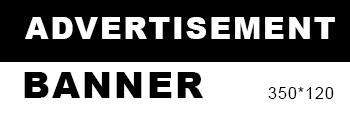In the dynamic world of small business, understanding the intricacies of insurance is not just a matter of compliance; it’s a crucial component of risk management and financial stability. As a small business owner, determining the right amount of insurance coverage can be daunting, yet it is essential for safeguarding your enterprise against unforeseen events. This article delves into the factors influencing insurance needs, the types of coverage available, and practical steps to calculate the appropriate amount of insurance for your small business.
Understanding the Importance of Insurance for Small Businesses
Insurance serves as a safety net for small businesses, protecting them from various risks that could jeopardize their operations. From property damage to liability claims, the right insurance coverage can mean the difference between recovery and financial ruin. According to the Small Business Administration (SBA), approximately 30% of small businesses will experience a disaster, and without adequate insurance, many will not survive the aftermath.
Key Factors Influencing Insurance Needs
- Nature of the Business: The type of industry you operate in significantly influences your insurance requirements. For instance, a construction company will need different coverage compared to a tech startup. Understanding the specific risks associated with your industry is crucial in determining the necessary coverage.
- Business Size and Structure: The size of your business, including the number of employees and the scale of operations, plays a vital role in assessing insurance needs. Larger businesses with more employees may face higher liability risks, necessitating more comprehensive coverage.
- Location: Geographic location can impact the types of risks your business faces. Businesses in areas prone to natural disasters, such as floods or earthquakes, may require additional coverage to protect against these specific threats.
- Assets and Equipment: The value of your business assets, including equipment, inventory, and property, should be factored into your insurance calculations. A thorough inventory assessment can help determine the replacement costs in case of damage or loss.
- Regulatory Requirements: Certain industries have specific insurance requirements mandated by law. Familiarizing yourself with these regulations is essential to ensure compliance and avoid potential penalties.
Types of Insurance Coverage for Small Businesses
To effectively protect your business, consider the following types of insurance:
- General Liability Insurance: This is a fundamental coverage that protects against claims of bodily injury, property damage, and personal injury. It is essential for any small business, regardless of industry.
- Property Insurance: This coverage protects your physical assets, including buildings, equipment, and inventory, from risks such as fire, theft, and vandalism.
- Workers’ Compensation Insurance: If you have employees, this insurance is often legally required. It covers medical expenses and lost wages for employees who are injured on the job.
- Professional Liability Insurance: Also known as errors and omissions insurance, this coverage is crucial for service-based businesses, protecting against claims of negligence or inadequate work.
- Business Interruption Insurance: This coverage helps replace lost income and cover expenses during periods when your business is unable to operate due to a covered event.
Calculating the Right Amount of Insurance Coverage
Determining how much insurance your small business needs involves a systematic approach:
- Conduct a Risk Assessment: Identify potential risks specific to your business and industry. This assessment should include both internal and external factors that could impact operations.
- Evaluate Asset Value: Create a detailed inventory of all business assets, including their current market value. This will help you determine the amount of property insurance needed.
- Estimate Liability Exposure: Consider the potential liability risks your business faces. This includes evaluating the likelihood of accidents, injuries, or claims against your business.
- Consult with Insurance Professionals: Engaging with an insurance broker or agent can provide valuable insights. They can help tailor a coverage plan that aligns with your business needs and budget.
- Review and Adjust Regularly: As your business grows and evolves, so will your insurance needs. Regularly reviewing your coverage ensures that you remain adequately protected against emerging risks.
Conclusion
In conclusion, determining how much insurance is needed for a small business is a multifaceted process that requires careful consideration of various factors. By understanding the unique risks associated with your industry, evaluating your assets, and consulting with professionals, you can develop a comprehensive insurance strategy that protects your business from potential threats. Remember, investing in the right insurance coverage is not just a legal obligation; it’s a proactive step towards ensuring the longevity and success of your small business in an unpredictable world.

